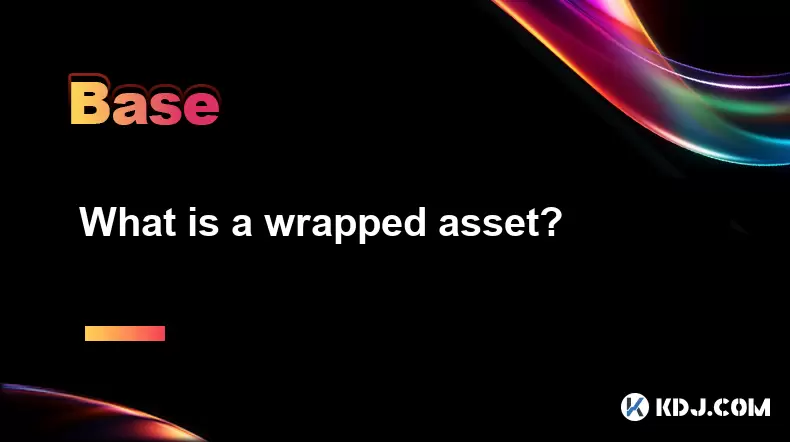-
 Bitcoin
Bitcoin $108,250.0992
0.11% -
 Ethereum
Ethereum $2,515.9404
0.03% -
 Tether USDt
Tether USDt $1.0003
0.00% -
 XRP
XRP $2.2166
-0.19% -
 BNB
BNB $656.5904
0.29% -
 Solana
Solana $147.4122
-0.58% -
 USDC
USDC $1.0000
-0.01% -
 TRON
TRON $0.2830
0.06% -
 Dogecoin
Dogecoin $0.1641
0.27% -
 Cardano
Cardano $0.5739
-0.19% -
 Hyperliquid
Hyperliquid $39.1463
-0.11% -
 Sui
Sui $2.8882
-0.02% -
 Bitcoin Cash
Bitcoin Cash $487.6428
0.31% -
 Chainlink
Chainlink $13.2097
0.07% -
 UNUS SED LEO
UNUS SED LEO $9.0308
0.10% -
 Avalanche
Avalanche $17.8608
0.13% -
 Stellar
Stellar $0.2379
-0.06% -
 Toncoin
Toncoin $2.7400
-0.39% -
 Shiba Inu
Shiba Inu $0.0...01144
-0.36% -
 Litecoin
Litecoin $87.5467
0.66% -
 Hedera
Hedera $0.1538
0.22% -
 Monero
Monero $315.5479
0.36% -
 Dai
Dai $1.0000
0.00% -
 Polkadot
Polkadot $3.3523
-0.71% -
 Ethena USDe
Ethena USDe $1.0003
0.01% -
 Bitget Token
Bitget Token $4.3960
-1.03% -
 Uniswap
Uniswap $7.2663
4.19% -
 Aave
Aave $272.8619
2.04% -
 Pepe
Pepe $0.0...09676
-0.18% -
 Pi
Pi $0.4586
-2.87%
What is a wrapped asset?
Wrapped assets like WBTC enable cross-chain interoperability, allowing cryptocurrencies to function on different blockchains while maintaining a 1:1 peg with the original asset.
Jul 06, 2025 at 06:42 am

Understanding the Concept of a Wrapped Asset
A wrapped asset refers to a tokenized version of an existing cryptocurrency that allows it to be used on a different blockchain network. This process enables interoperability between blockchains, which are typically isolated from one another due to differences in protocols and consensus mechanisms. For example, Bitcoin (BTC) cannot natively interact with Ethereum-based smart contracts, but a wrapped version like Wrapped Bitcoin (WBTC) can operate within the Ethereum ecosystem.
The creation of a wrapped asset involves locking the original cryptocurrency in a reserve and issuing an equivalent amount of the wrapped token on the target blockchain. This ensures that each wrapped token is backed 1:1 by the underlying asset. The mechanism relies heavily on trustless systems or custodians, depending on the implementation, to maintain transparency and security.
How Wrapped Assets Are Created
To create a wrapped asset, several steps must be followed to ensure the integrity and value parity of the original asset:
- A user sends their original cryptocurrency (e.g., BTC) to a custodian or smart contract.
- The custodian verifies the deposit and issues the corresponding amount of the wrapped token (e.g., WBTC) on the destination blockchain.
- These wrapped tokens can now be used for decentralized finance (DeFi) applications, trading, or staking on the new chain.
- When the user wants to redeem the original asset, they burn the wrapped token and receive back the native cryptocurrency.
This process maintains a peg between the original and wrapped assets, ensuring users retain the same value while benefiting from cross-chain utility.
The Role of Custodians and Smart Contracts
Depending on the design of the wrapped asset system, either custodians or smart contracts are responsible for managing the minting and burning of tokens. In custodial models like WBTC, a centralized entity holds the original assets and issues the wrapped tokens. Users must trust this custodian to securely store the reserves and act transparently.
In contrast, non-custodial solutions like wBTC DAO or other decentralized bridges use smart contracts to automate the wrapping process. These systems reduce reliance on third parties and increase decentralization, although they may still carry risks such as smart contract vulnerabilities or oracle manipulation.
Use Cases for Wrapped Assets
Wrapped assets open up a wide range of opportunities across various blockchain ecosystems:
- DeFi Participation: Users can utilize assets like WBTC or wETH in liquidity pools, lending platforms, and yield farming strategies on Ethereum or other EVM-compatible chains.
- Cross-chain Trading: Wrapped tokens enable seamless trading across different decentralized exchanges without requiring native blockchain support.
- Portfolio Diversification: Investors can diversify their portfolios using familiar assets across multiple networks, increasing flexibility and access to new financial tools.
- Improved Liquidity: By bringing external assets into a blockchain, wrapped tokens enhance liquidity and market depth for decentralized applications.
These use cases demonstrate how wrapped assets bridge gaps between otherwise incompatible networks, enabling richer and more versatile interactions within the crypto space.
Risks and Considerations
While wrapped assets provide significant benefits, they also come with potential risks:
- Custodial Risk: If a wrapped asset relies on a centralized custodian, users must trust that the custodian will not mismanage funds or become compromised.
- Smart Contract Vulnerabilities: Non-custodial wrapped tokens depend on code execution; any flaws can lead to loss of funds or manipulation.
- Price Peg Stability: Although wrapped assets aim to maintain a 1:1 peg with the original asset, temporary discrepancies can occur due to market conditions or exchange-specific imbalances.
- Regulatory Uncertainty: Depending on jurisdiction, wrapped tokens might face scrutiny as securities or regulated instruments, potentially affecting their availability or usage.
Users should carefully evaluate these risks before engaging with wrapped assets and conduct thorough research on the specific implementation model behind each token.
Frequently Asked Questions
Q: Can I convert any cryptocurrency into a wrapped asset?
Not all cryptocurrencies have wrapped versions. The availability depends on community demand, technical feasibility, and whether a secure wrapping mechanism exists for that asset.
Q: Is there a fee involved when wrapping or unwrapping tokens?
Yes, most wrapping services charge fees for minting or burning tokens. Additionally, users must pay gas fees on the target blockchain for transaction processing.
Q: How do I verify that a wrapped token is fully backed?
Reputable wrapped asset projects publish proof of reserves through on-chain audits or third-party verification services. Always check the project’s official documentation or transparency reports before trusting its backing claims.
Q: Are wrapped assets considered stablecoins?
No, wrapped assets are not stablecoins. While both represent value on-chain, stablecoins are designed to maintain a fixed fiat value (e.g., $1), whereas wrapped assets mirror the price of an existing cryptocurrency like BTC or ETH.
Disclaimer:info@kdj.com
The information provided is not trading advice. kdj.com does not assume any responsibility for any investments made based on the information provided in this article. Cryptocurrencies are highly volatile and it is highly recommended that you invest with caution after thorough research!
If you believe that the content used on this website infringes your copyright, please contact us immediately (info@kdj.com) and we will delete it promptly.
- Litecoin Breakout Watch: What Traders Need to Know Now
- 2025-07-06 16:50:13
- Bitcoin, Solana, Ethereum: Decoding the Latest Buzz on the Blockchain
- 2025-07-06 16:50:13
- Widnes Resident's 50p Could Be Your Ticket to Easy Street: Rare Coin Mania!
- 2025-07-06 16:55:13
- Bitcoin, Solaris Presale, and Token Rewards: What's the Buzz?
- 2025-07-06 16:55:13
- Ethereum Under Pressure: Price Drop Amid Global Uncertainties
- 2025-07-06 17:00:13
- XRP, SEC Case, and Prosperity: A New Era for XRP Holders?
- 2025-07-06 17:10:13
Related knowledge

What is a user-generated content (UGC) NFT platform?
Jul 04,2025 at 01:49pm
Understanding the Concept of a UGC NFT PlatformA user-generated content (UGC) NFT platform is a digital marketplace or ecosystem where users can create, mint, and trade non-fungible tokens (NFTs) that represent ownership of original digital content they produce. Unlike traditional NFT platforms where creators often include professional artists or develo...

What is composability in DeFi?
Jul 06,2025 at 04:07pm
Understanding the Concept of Composability in DeFiComposability in DeFi refers to the ability of decentralized finance protocols and smart contracts to interact seamlessly with one another, much like building blocks that can be combined in various ways to create new financial products and services. This concept is a core innovation within the DeFi ecosy...

What is a "crypto primitive"?
Jul 05,2025 at 10:14pm
Defining the Concept of a Crypto PrimitiveIn the context of blockchain and cryptocurrency, a crypto primitive refers to a fundamental building block or foundational element used in constructing decentralized systems and cryptographic protocols. These primitives are essential for enabling secure transactions, consensus mechanisms, and smart contract exec...

What is a fair launch?
Jul 05,2025 at 07:31pm
Understanding the Concept of a Fair LaunchA fair launch refers to the release of a cryptocurrency or blockchain project in a manner that ensures equal opportunity for all participants. Unlike traditional token launches, which may involve private sales, venture capital funding, or pre-mining, a fair launch emphasizes transparency and decentralization. In...

What is a cliff in tokenomics?
Jul 05,2025 at 07:18pm
Understanding the Concept of a Cliff in TokenomicsIn the world of cryptocurrency and blockchain, tokenomics plays a pivotal role in shaping the economic behavior of a digital asset. One of the key mechanisms used to manage token distribution is known as a cliff. This concept is commonly applied in projects that include vesting schedules for tokens, espe...

What is a token generation event (TGE)?
Jul 04,2025 at 07:14am
Understanding the Basics of a Token Generation Event (TGE)A Token Generation Event (TGE) refers to the process through which a blockchain project creates and distributes its native tokens to investors, participants, or stakeholders. This event is often associated with new cryptocurrency projects launching on platforms like Ethereum, Binance Smart Chain,...

What is a user-generated content (UGC) NFT platform?
Jul 04,2025 at 01:49pm
Understanding the Concept of a UGC NFT PlatformA user-generated content (UGC) NFT platform is a digital marketplace or ecosystem where users can create, mint, and trade non-fungible tokens (NFTs) that represent ownership of original digital content they produce. Unlike traditional NFT platforms where creators often include professional artists or develo...

What is composability in DeFi?
Jul 06,2025 at 04:07pm
Understanding the Concept of Composability in DeFiComposability in DeFi refers to the ability of decentralized finance protocols and smart contracts to interact seamlessly with one another, much like building blocks that can be combined in various ways to create new financial products and services. This concept is a core innovation within the DeFi ecosy...

What is a "crypto primitive"?
Jul 05,2025 at 10:14pm
Defining the Concept of a Crypto PrimitiveIn the context of blockchain and cryptocurrency, a crypto primitive refers to a fundamental building block or foundational element used in constructing decentralized systems and cryptographic protocols. These primitives are essential for enabling secure transactions, consensus mechanisms, and smart contract exec...

What is a fair launch?
Jul 05,2025 at 07:31pm
Understanding the Concept of a Fair LaunchA fair launch refers to the release of a cryptocurrency or blockchain project in a manner that ensures equal opportunity for all participants. Unlike traditional token launches, which may involve private sales, venture capital funding, or pre-mining, a fair launch emphasizes transparency and decentralization. In...

What is a cliff in tokenomics?
Jul 05,2025 at 07:18pm
Understanding the Concept of a Cliff in TokenomicsIn the world of cryptocurrency and blockchain, tokenomics plays a pivotal role in shaping the economic behavior of a digital asset. One of the key mechanisms used to manage token distribution is known as a cliff. This concept is commonly applied in projects that include vesting schedules for tokens, espe...

What is a token generation event (TGE)?
Jul 04,2025 at 07:14am
Understanding the Basics of a Token Generation Event (TGE)A Token Generation Event (TGE) refers to the process through which a blockchain project creates and distributes its native tokens to investors, participants, or stakeholders. This event is often associated with new cryptocurrency projects launching on platforms like Ethereum, Binance Smart Chain,...
See all articles

























































































